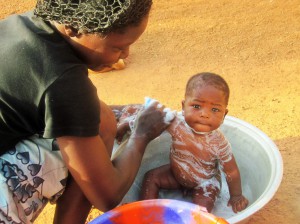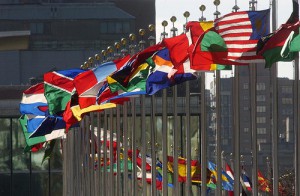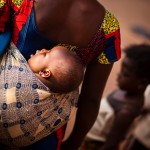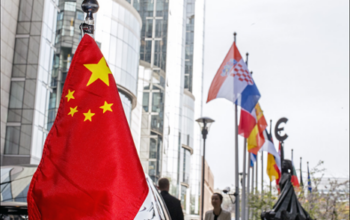The weekend of September 25, 2015 was historic: not only did Pope Francis give a speech to the US Congress for the first time in papal history, 136 heads of state, 30 ministers, and 9000 delegates gathered in New York City at the United Nations Headquarters in Midtown Manhattan. It was a most historic weekend as all 193 UN member states turned in their written agreement to a document officially called ‘Transforming our World: the 2030 Agenda for Sustainable Development’.
In this document, the world speaks with one voice to promise a more just, healthful, and peaceable global whole. What can we expect from this optimistic agenda? Will the world be a better place in 15 years?
The so-called Sustainable Development Goals (SDGs) are an ambitious set of 17 goals and 169 targets with the objective of making the world more equal and sustainable so that future generations will be able to live on our planet in a fairer and hopefully more peaceful way. Although their adoption is an encouraging sign of good-will, the agreement over the global indicators for measuring success and implementation, due by March 2016, will either
reinforce or dampen hopes for the agenda.
These goals, however, are nothing innovative or ground-breaking. In 2000, the world had made its first set of promises to the poorest and most disadvantaged of the worlds populous.
For an overview of the achievement of the MDGs see an analysis in The Guardian.
Those Millennium Development Goals (MDGs) aimed at, amongst other points, lifting everyone out of extreme poverty while eradicating hunger, diseases, and illiteracy.
The goals sought to increase access to health care and clean water for everyone.
In essence, these benchmarks have barely been fulfilled. To concede, most goals achieved a trend in the right
direction, however. Most significantly, extreme poverty reduced dramatically: almost half of the worlds population in 1990 lived in extreme poverty and the figure has dropped to 14% of the total population in 2015. With regards to primary education for children around the globe, clear progress was made. Currently, 91% of all
children are enrolled in school.
Nevertheless, despite the positive trends, progress has been uneven as the poorest are still living in the periphery where they are vulnerable to starvation, disease, sexual violence, illiteracy, displacement, and other travesties. It is well known that large gaps persist between the worlds wealthiest and poorest. In the end, a lot of work remains to be done.
Hunger and poverty persist as well as the lack of basic services.
The SDGs, which will be enacted for the next 15 years until the end of 2030, can thus be seen as ‘only’ a follow-up to those Millennium Development Goals expiring at the end of this year. However, the SDGs are more than just an updated version of the MDGs. They are designed to be more inclusive and universal, addressing the developing as well as the developed world in an effort to integrate every nation in this process of transforming our world for the better. The adoption of the SDGs comes at a time when international collective action is urgently needed. We see new conflicts arising through the Middle East and Africa more frequently than wars being settled. The number of refugees is as high as during World War II. The international community does not seem to be able or willing to devote enough energy and time to discuss issues in a diplomatic way and somehow seem to drift apart as they choose
sides and fund conflicts and even wars. Although it is a well-worn cliché, the United Nations needs to remember that the SDGs are at the mercy of individual states who predominantly focus on their own interests and monetary awards. And beyond that, the seemingly-intractable challenges of poverty, hunger, spread of disease, access to clean water, gender inequality, environmental degradation, lack of education, child mortality and so on and so
forth are still far from being resolved.
In line with this dilemma, we have to ask ourselves: What are the SDGs actually worth? Are they mere empty sentiments only speaking to a far-reaching desire for global peace and prosperity? How much persistent effort and funding can we actually expect from the United Nations member states? And, will all 193 members seriously devote themselves to the achievement and implementation of these ambitious goals?
It is probably naïve and utopian to believe in the absolute fulfilmentof the goals by 2030.
The adoption of the SDGs is just the first step in a series of more difficult achievements. International devotion to the implementation of the goals coupled with the willingness of each government to make national laws cohesive with goals is as indispensable as an ambition to see global and private sectors contributing their part to the achievement. There must be a refocusing of priorities and a transformation in the ways of conducting business.
In laymans terms, we must reinvent the wheel. Some sceptics have argued that the fulfilment of the agenda is an 18th goal in itself, implying that it is nearly impossible to achieve success in 2030-because escalating factors work against the agenda. What naysayers ignore, however, is the fact that almost all countries of the world made a considerable effort to produce a  document in which they commit themselves to cooperation in order to jointly
document in which they commit themselves to cooperation in order to jointly
work on the positive and sustainable transformation of the world, which alone is a significant success.
The unanimous adoption by the UN’s 193 member states is a first step, but indeed a major one. The second step will be the UN member states agreement over the set of global indicators for the measurement, monitoring, and review of the
implementation of the SDGs, which is due by March 2016. The third, is in the hands of the policy makers, private
businesses, and the civil society and will continuously demand and encourage national leaders to work on the implementation of the 2030 Agenda for Sustainable Development.
It remains to be seen whether this historic weekend last month will once be remembered as the weekend where the world at the UN Summit adopted these Sustainable Development Goals whole-heartedly, setting an agenda which did transform the world into a better place, or whether it was just an empty promise to those who are still living in extreme poverty, without access to health care, education and clean water.
By Sarah Pfaffernoschke
Image Credit:
Picture 1: Sarah Pfaffernoschke
Picture 2: United Nations Photo licensed under CC BY-NC-ND 2.0






